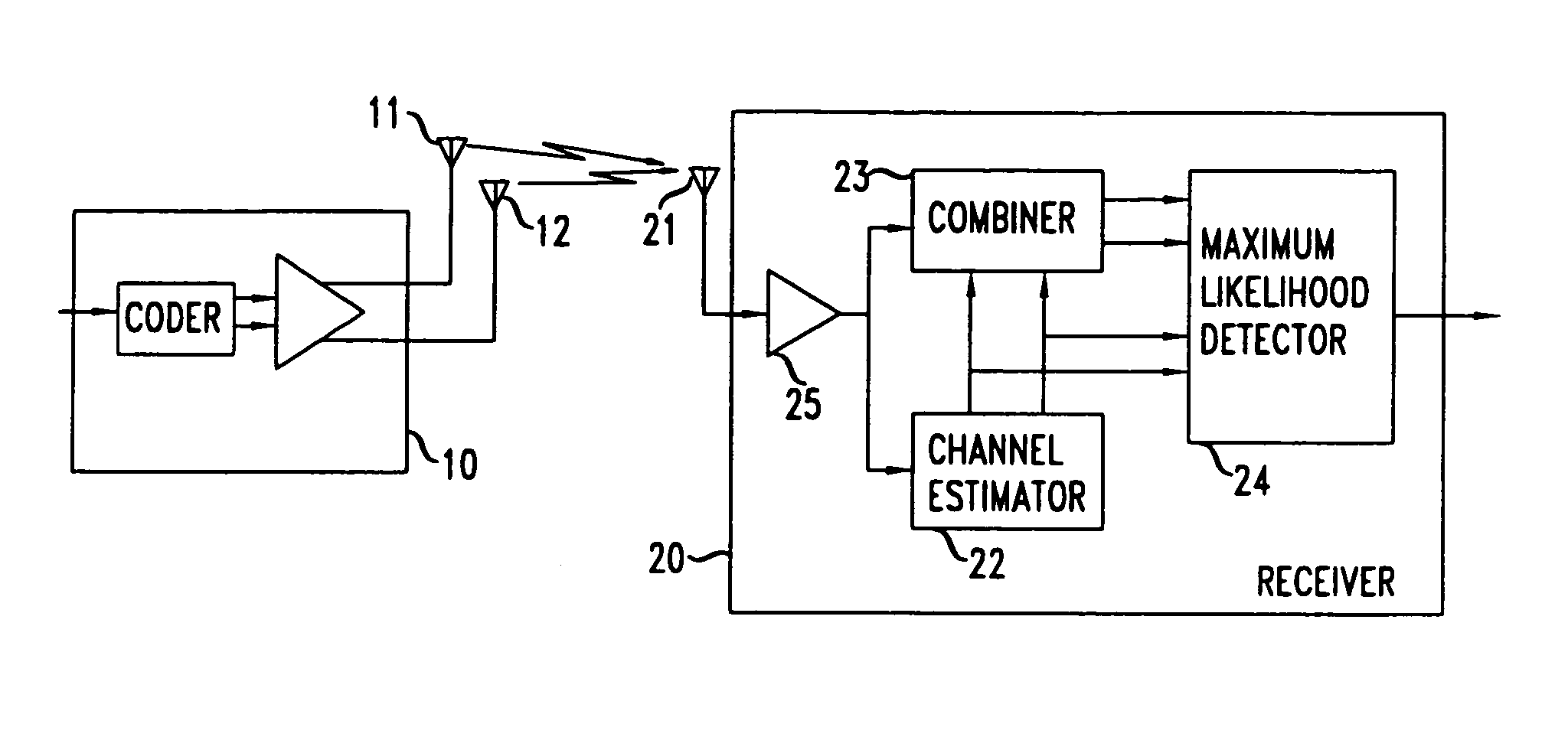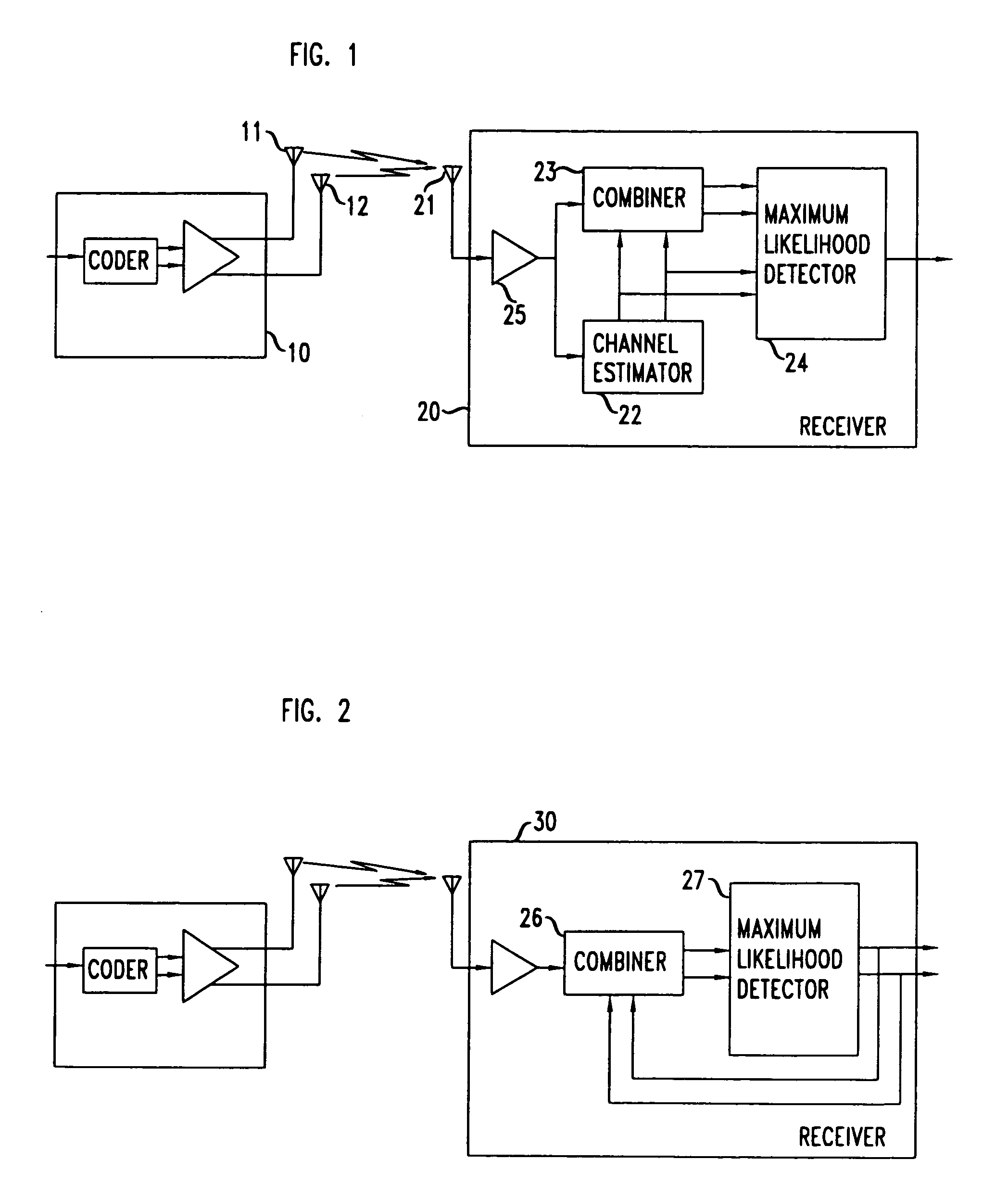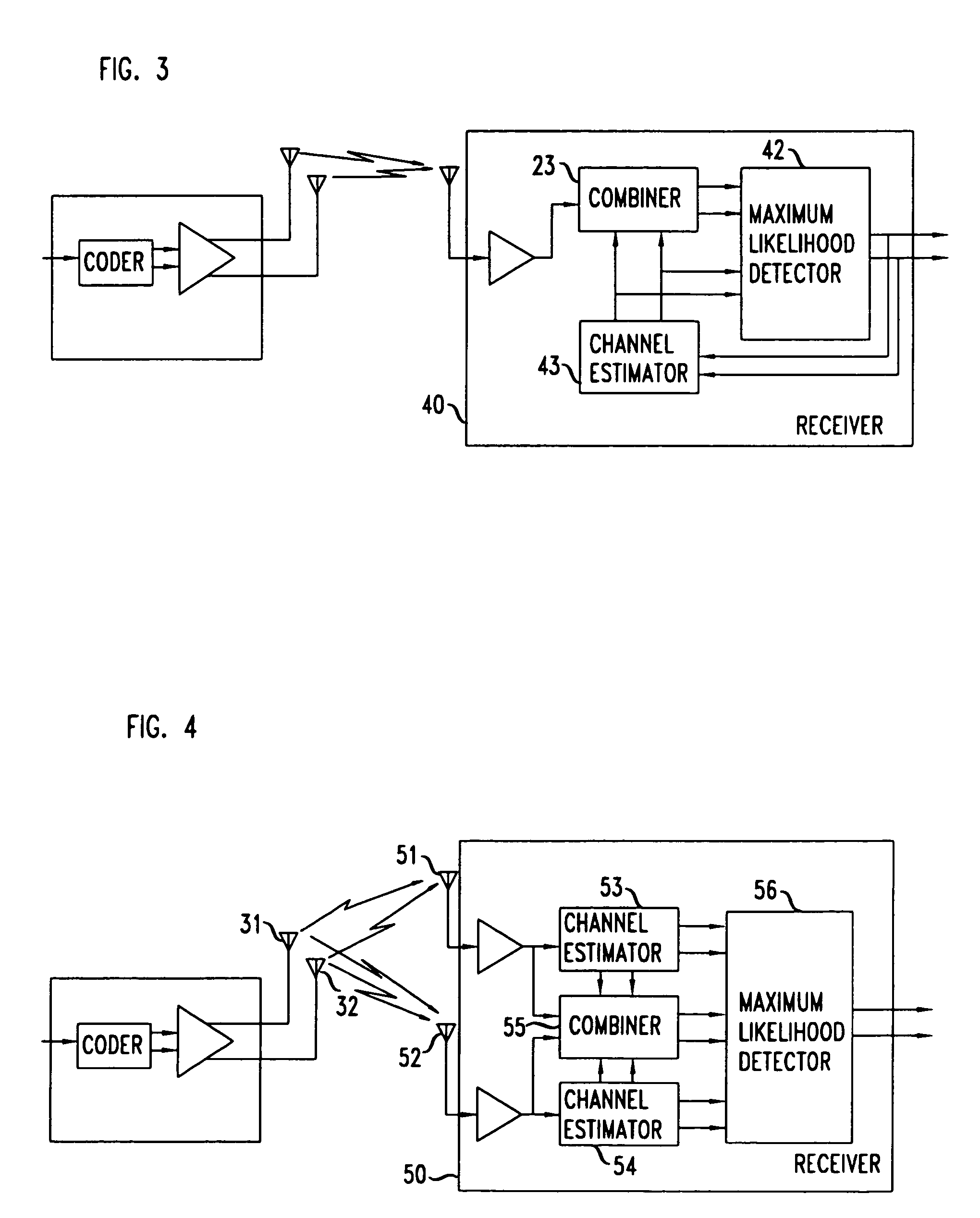Transmitter diversity technique for wireless communications
a technology of wireless communication and transmitter, applied in the field of wireless communication, can solve the problems of power by x db, transmission repeat, and transmission dynamic rang
- Summary
- Abstract
- Description
- Claims
- Application Information
AI Technical Summary
Benefits of technology
Problems solved by technology
Method used
Image
Examples
Embodiment Construction
[0015]In accordance with the principles of this invention, effective communication is achieved with encoding of symbols that comprises merely negations and conjugations of symbols (which really is merely negation of the imaginary part) in combination with a transmitter created diversity. Space diversity and either frequency diversity or time diversity are employed.
[0016]FIG. 1 presents a block diagram of an arrangement where the two controllable aspects of the transmitter that are used are space and time. That is, the FIG. 1 arrangement includes multiple transmitter antennas (providing space diversity) and employs multiple time intervals. Specifically, transmitter 10 illustratively comprises antennas 11 and 12, and it handles incoming data in blocks n symbols, where n is the number of transmitter antennas, and in the illustrative embodiment of FIG. 1, it equals 2, and each block takes n symbol intervals to transmit. Also illustratively, the FIG. 1 arrangement includes a receiver 20 ...
PUM
 Login to View More
Login to View More Abstract
Description
Claims
Application Information
 Login to View More
Login to View More - R&D
- Intellectual Property
- Life Sciences
- Materials
- Tech Scout
- Unparalleled Data Quality
- Higher Quality Content
- 60% Fewer Hallucinations
Browse by: Latest US Patents, China's latest patents, Technical Efficacy Thesaurus, Application Domain, Technology Topic, Popular Technical Reports.
© 2025 PatSnap. All rights reserved.Legal|Privacy policy|Modern Slavery Act Transparency Statement|Sitemap|About US| Contact US: help@patsnap.com



